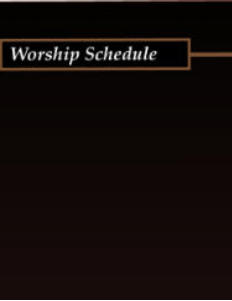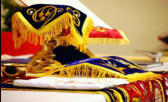Indian Orthodox Church
The Indian Orthodox Church (also known as Malankara Orthodox Syrian Church, Orthodox Syrian Church of the East), is a prominent member of the Oriental Orthodox Churches. The Church traces its origins to St. Thomas the Apostle, who came to India in AD 52. St Thomas preached the gospel, established 7 parishes in Kerala in Southern India and ordained priests. Christian writers and representatives of the Churches, from the 4 th century refer to the evangelistic labors of St. Thomas in India, during the first century. Official name of the Church- Malankara Orthodox Syrian Church- can be explained as: ‘Malankara’ is another name for Kerala, ‘Orthodox’ is the category of Christian faith and tradition it follows (distinguishes it from the Roman Catholic and Protestant faiths), and ‘Syrian’ comes from the Syriac language which was the liturgical language of the church for centuries. The church which St Thomas established remained as a strong community within Kerala for 19 centuries, without expanding itself to other parts of India. From the early parts of the 20 th century, as many people migrated to other parts of India, parishes started coming up all over India. As a result, the Church is presently known as Indian Orthodox Church. Now the Church has dioceses and parishes in most parts of India as well as in other parts of the world where Keralites are migrated. Administration The Church has its head quarters at Kottayam, Kerala. The present head of the Indian Orthodox church is H.H. Baselios Marthoma Mathews III . The official title of the head of the Church is “the Catholicos of the East seated on the throne of St Thomas and the Malankara Metropolitan”. The Church is ruled and governed by the Church Constitution of 1934. True to the orthodox Christian tradition, the Indian Orthodox Church employs an administrative system which is a perfect blend of episcopacy and democracy. The Church is divided into 30 dioceses with a bishop heading each diocese. The Malankara Syrian Association is the parliament of the Church which is a body of bishops and elected laity and clergy representatives from all the parishes. This Association meets on special occasions to take important decisions pertaining to the entire church. The administration is conducted in a democratic approach. The Association also elects a Managing Committee for carrying out administrative activities on behalf of the Association. The number of laity members of this committee is double that of the clergy, which indicates the participative nature of laity in Church matters. The Episcopal Synod comprising of all the Bishops of the Church is the authority regarding Faith, Order and Discipline. The Synod is also responsible to install the Catholicos designated by the Association.
St. Mary's Orthodox Church of India, 1080 W Jackson Road, Carrollton, TX - Copyright © 2025 All Rights Reserved








St. Mary’s Orthodox Church of India, Dallas









